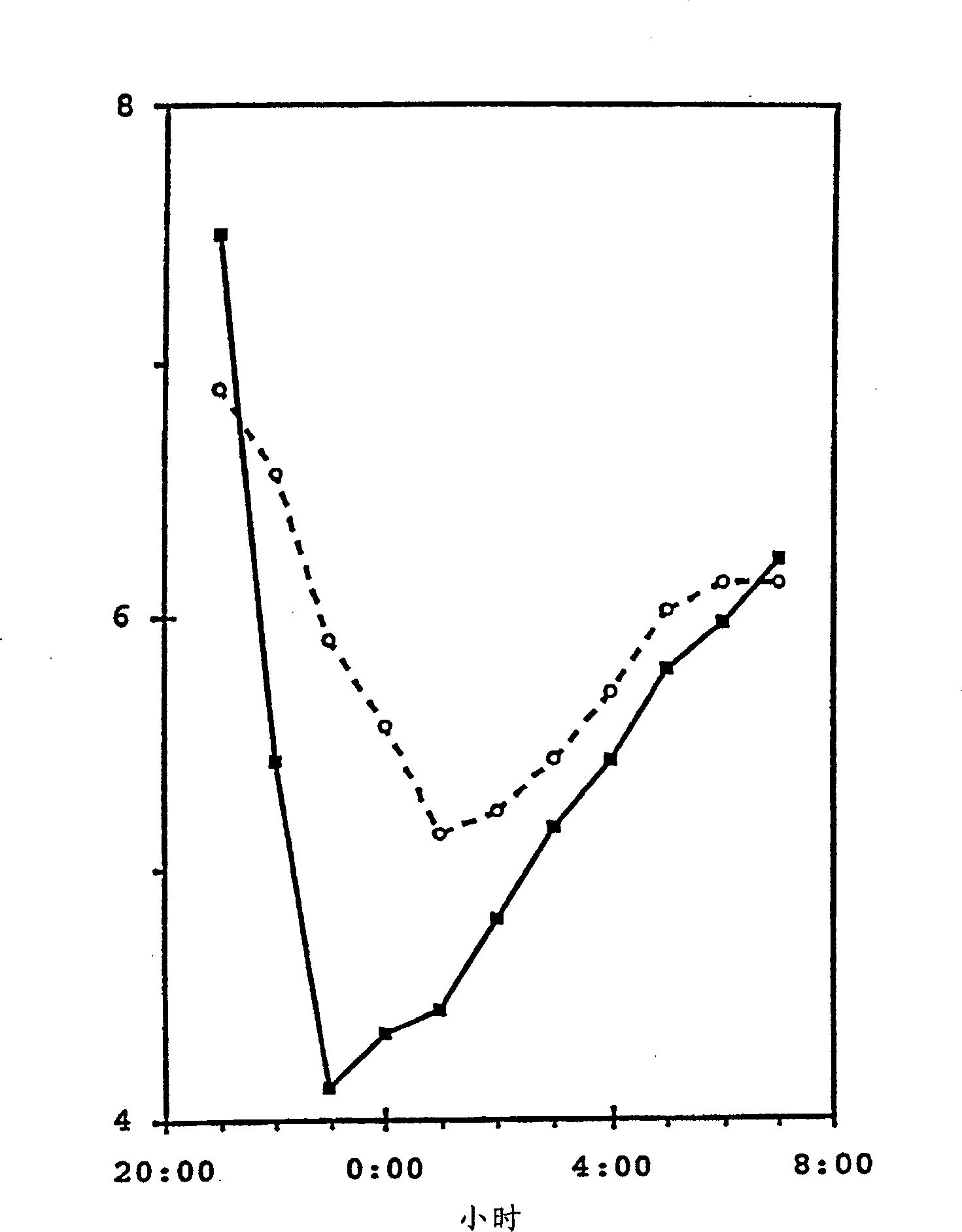Use of GLP-1 or analogs in treatment of stroke
A technology of GLP-1 and analogues, applied in the field of application of GLP-1 or analogues in the treatment of stroke, can solve the problems of heavy burden on health care experts, increase the difficulty and cost of treatment, and achieve the goal of avoiding the risk of hypoglycemia and reducing the risk of hypoglycemia Effects on Small Infarct Size, Mortality, and Morbidity Reduction
- Summary
- Abstract
- Description
- Claims
- Application Information
AI Technical Summary
Problems solved by technology
Method used
Image
Examples
Embodiment 1
[0240] Example 1: Effect of subcutaneous infusion of GLP-1 (7-30) on blood glucose in NIDDM patients
[0241] GLP-1(7-36)amide was administered to five non-insulin-dependent diabetic (NIDDM) patients overnight by subcutaneous infusion for ten hours at a rate of 1.2 pmol / kg / hr. As a control, insulin was infused to the same five patients on a day when GLP-1(7-36)amide was not infused. The insulin infusion rate was adjusted every two hours to achieve optimal control and avoid hypoglycemia. Table 1 and figure 1 The data demonstrate that subcutaneous infusion of GLP-1(7-36)amide normalized blood glucose in almost all patients without inducing hypoglycemia. GLP-1(7-36) amide metabolism was better controlled than that achieved with insulin, at 23:00, 0:00 and 1:00, mean blood glucose levels were lower in GLP-1(7-36) amide treatment than in controls , with a statistically significant difference.
[0242] GLP-1 infusion
Embodiment 2
[0243] Example 2: Effect of subcutaneous infusion of GLP-1(7-36) during meals on blood glucose levels in NIDDM patients
[0244] Five NIDDM patients were infused with GLP-1(7-36)amide for three hours during breakfast, lunch and dinner on the day of the study. The infusion time is 7:30-10:30 (breakfast), 10:30-1:30 (lunch) and 4:30-7:30 (dinner), such as figure 2 shown. In a controlled experiment performed on the same five NIDDM patients on another day, insulin was injected subcutaneously shortly before the start of each meal, as figure 2 shown. The postprandial glucose excursion observed with insulin injections was abolished and normoglycemia was maintained when GLP-1 was infused. Blood glucose levels rose significantly immediately after each GLP-1(7-36)amide infusion was terminated. No counterproductive side effects of GLP-1(7-36)amide were observed. These data demonstrate that GLP-1(7-36)amide infusion controls postprandial glucose levels more effectively than insulin...
PUM
 Login to View More
Login to View More Abstract
Description
Claims
Application Information
 Login to View More
Login to View More - R&D
- Intellectual Property
- Life Sciences
- Materials
- Tech Scout
- Unparalleled Data Quality
- Higher Quality Content
- 60% Fewer Hallucinations
Browse by: Latest US Patents, China's latest patents, Technical Efficacy Thesaurus, Application Domain, Technology Topic, Popular Technical Reports.
© 2025 PatSnap. All rights reserved.Legal|Privacy policy|Modern Slavery Act Transparency Statement|Sitemap|About US| Contact US: help@patsnap.com


